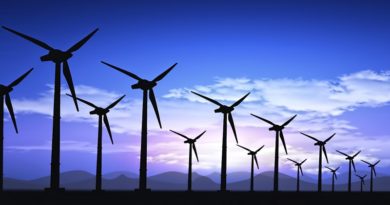Why wetlands are disappearing three times faster than forests
Wetlands, amongst the world’s most economically valuable ecosystems and essential regulators of the global climate, are disappearing three times faster than forests.
This is the key finding of the first-ever Global Wetland Outlook by the Ramsar Convention, a globally treaty ratified by 170 countries to protect wetlands and promote their wise use.
“The Global Wetland Outlook is a wake-up call – not only on the steep rate of loss of the world’s wetlands but also on the critical services they provide. Without them, the global agenda on sustainable development will not be achieved,” says Martha Rojas Urrego, Secretary General of the Ramsar Convention on Wetlands.
Wetlands include some of the most carbon-dense ecosystems in our planet, such as salt marshes, sea grass beds and mangroves. Peatlands that account for just 3% of the world’s land surface store twice as much carbon as forests, playing a pivotal role in delivering global commitments on climate change, sustainable development and biodiversity. Wetlands also help reduce disaster risk, as they mitigate floods and protect coastlines.
Despite their essential role in global climate regulation, wetlands remain undervalued by policy and decision-makers in national plans. Approximately 35% of the world’s wetlands were lost between 1970-2015 and the loss rate is accelerating annually since 2000.
Losses have been driven by megatrends such as climate change, population increase, urbanization, particularly of coastal zones and river deltas, and changing consumption patterns that have all fueled changes to land and water use and to agriculture.
The world’s remaining wetlands are under threat due to water drainage, pollution, unsustainable use, invasive species, and disrupted flows from dams and sediment dumping from deforestation and soil erosion upstream.
Wetlands are critical to human and planet life. Directly or indirectly, they provide almost all of the world’s consumption of freshwater. More than one billion people depend on them for a living and they are among the most bio diverse ecosystems. Up to 40% of the world’s species live and breed in wetlands, although now more than 25% of all wetlands plants and animals are at risk of extinction.
Wetlands are a vital source for food, raw materials, genetic resources for medicines, and hydropower, and they play an important role in transport, tourism and the cultural and spiritual well-being of people.
“There is a slow awakening to the value of wetlands. Across the globe, legislative bodies need to integrate wetlands into policy programs and make investments into their sustainability. We need to educate the world on the critical importance of this most rapidly disappearing ecosystem. Without the world’s wetlands, we all hang in the balance.”
Wetlands are currently estimated to cover more than 12.1 million km2, an area greater than Greenland. Between 13-18 per cent of them (2,300 sites) are on the Ramsar List of Wetlands of International Importance, which are protected sites.
But designating new sites for protection is not enough. The GWO emphasizes the necessity of developing effective wetland management plans and integrating wetlands into the planning and implementation of national plans on sustainable development, climate change and other key global commitments.
“We need urgent collective action to reverse trends on wetland loss and degradation, and secure both the future of wetlands and our own at the same time.”



